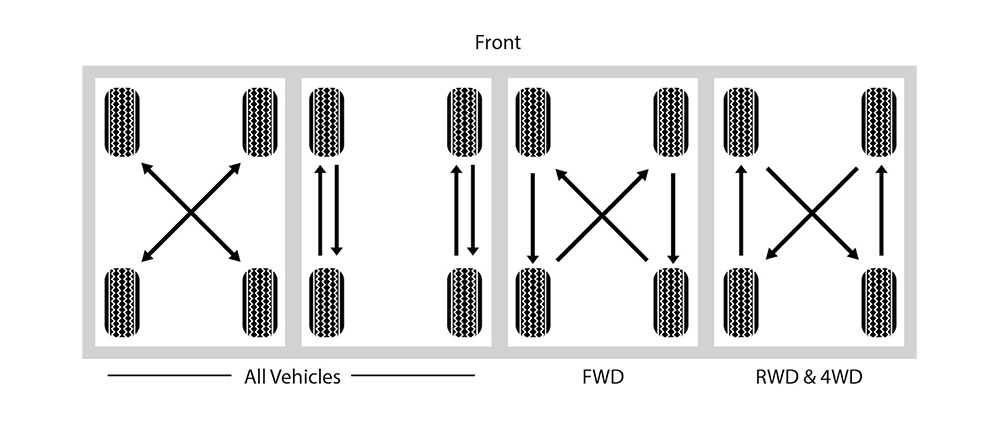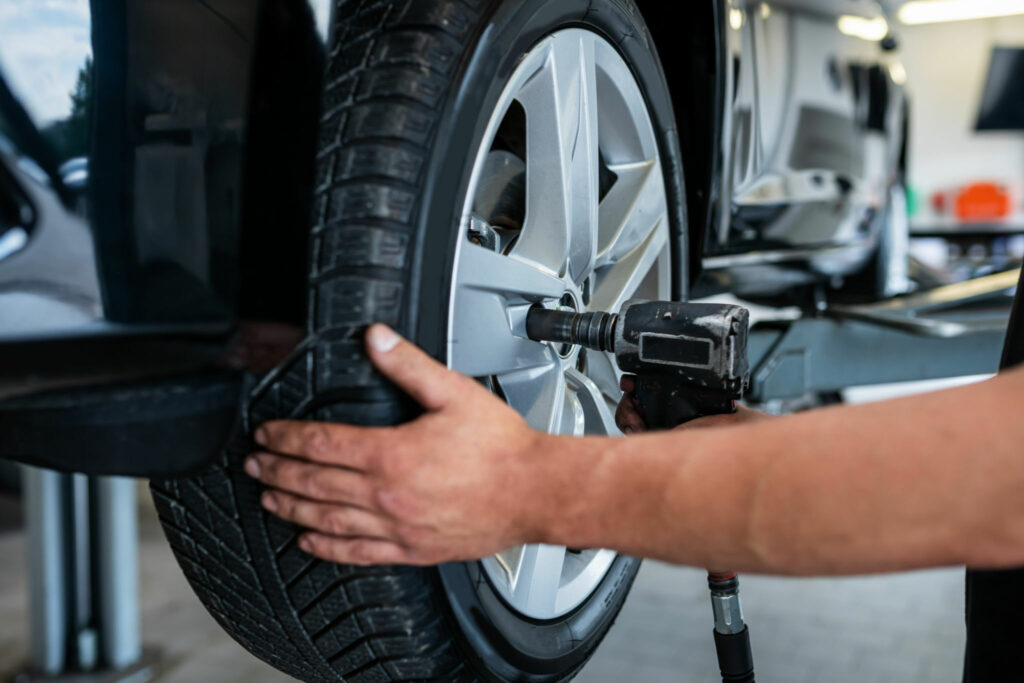Mastering the Basics: A Technical Insight into the Importance of Tire Rotation
Key Takeaways
- Tire rotation is a vital part of vehicle maintenance, crucial for tire longevity and safety.
- Understanding when and how to rotate your tires, whether DIY or professionally, enhances vehicle performance and saves money.
- Regular rotation helps avoid uneven wear and tear, ensuring a smoother, safer driving experience.
Tire rotation is an essential aspect of regular tire maintenance that is often overlooked by many vehicle owners. This important practice involves moving the tires from one position to another on a vehicle to ensure even tire wear. The purpose of tire rotation is to extend the lifespan of the tires, improve vehicle safety, and maintain optimal performance on the road.
Regular tire maintenance, including tire rotation, is crucial for ensuring the safety and efficiency of a vehicle. Many drivers may not be aware of the detrimental effects of uneven tire wear, which can lead to decreased traction, reduced fuel efficiency, and even potential blowouts. Therefore, understanding the importance of tire rotation is crucial in order to maintain the overall health of a vehicle.
In this article, we will delve into the definition of tire rotation, its importance in regular tire maintenance, and the purpose it serves in prolonging the life of tires and ensuring safe driving. Understanding the fundamentals of tire rotation is essential for every vehicle owner in order to maintain the overall health and safety of their vehicle.
The Benefits of Tire Rotation
- Extending Tire Life: One of the most compelling reasons to rotate your tires is to extend their lifespan. Regular rotation ensures that each tire experiences equal wear and tear. This helps in avoiding the premature need for tire replacement, saving you money in the long run.
- Enhancing Vehicle Performance: A vehicle with evenly worn tires performs better. You’ll experience smoother rides, better fuel efficiency, and improved traction. Even tire wear also means consistent handling and braking, which can be crucial in emergency situations.
- Safety on the Roads: Uneven tire wear can lead to a host of safety issues, from reduced traction to increased risk of tire blowouts. By regularly rotating your tires, you’re not just maintaining your vehicle; you’re actively contributing to safer roads, underscoring the importance of Tire Rotation.
- Economic Benefits: Consistently rotating your tires can lead to significant cost savings. With even wear, you won’t have to replace tires as frequently. Additionally, well-maintained tires contribute to better fuel economy, further reducing your expenses.
How Tire Rotation Works
Understanding Tire Wear Patterns
Each tire on a vehicle wears differently, depending on its position. For instance, front tires on a front-wheel-drive car carry more of the car’s weight and experience more stress during turning, leading to faster wear. Recognizing these wear patterns is key to determining the best rotation strategy.
Rotation Patterns and Their Application
Different vehicles and tire types require different rotation patterns. Common patterns include moving the front tires straight to the back while the rear tires move to the front in a cross pattern, or simply switching the front and rear tires on the same side. The right pattern depends on factors like your vehicle’s drivetrain (front-wheel, rear-wheel, all-wheel drive) and whether the tires are directional or non-directional.

When to Rotate Your Tires
Recommended Mileage Intervals for Rotation
The common recommendation for tire rotation is every 5,000 to 8,000 miles. This practice is pivotal, reflecting the importance of tire rotation for vehicle maintenance. Vehicle manufacturers may offer specific advice, thus it’s crucial to refer to your vehicle’s owner’s manual for the most accurate guidance. Following these guidelines is key to ensuring the health and longevity of your tires.
Signs That Indicate Tires Need Rotation
Watch for signs such as uneven tread wear, vibrations at higher speeds, and the vehicle pulling to one side. These symptoms suggest that your tires are wearing unevenly and need to be rotated. Regular visual inspections can help identify these signs early.
Factors That May Affect the Frequency of Tire Rotation
Several factors influence the frequency of tire rotation. These include your driving style (aggressive driving vs. conservative), the conditions of the roads you typically travel on (smooth highways vs. rough, uneven surfaces), and your vehicle type (e.g., front-wheel drive, all-wheel drive). Each of these can lead to different wear patterns, necessitating more frequent rotations for some drivers than others.
DIY Tire Rotation vs Professional Service
Steps for DIY Tire Rotation
For those who prefer DIY, rotating tires involves lifting the vehicle with a jack, removing the wheels, and swapping them according to the recommended rotation pattern for your vehicle. This task requires a basic understanding of vehicle mechanics and the right tools. Safety is paramount when lifting and working under a vehicle.
Benefits of Professional Tire Rotation Service
A professional tire rotation service offers thoroughness and convenience. Professionals not only rotate the tires but also inspect them for damage, check tire pressure, and balance the tires if needed. Their expertise ensures the rotation is done correctly, which is crucial for your vehicle’s performance and safety.
Considerations for Choosing the Right Method for Your Vehicle
Choosing between DIY and professional service depends on your comfort level with vehicle maintenance tasks, the tools at your disposal, and the complexity of your vehicle’s tire rotation needs. For those who are less experienced, or for vehicles with specific rotation patterns (like those with different sized tires on the front and back), professional service is often the best choice.
FAQ
Typically, every 5,000 to 8,000 miles, but always check your vehicle’s owner’s manual for specific recommendations.
Uneven tread wear, vibrations while driving, and the vehicle pulling to one side are common signs.
This depends on your comfort and experience with car maintenance, as well as the tools available. If unsure, professional service is recommended for safety and accuracy.
Checkout our guide on – Best Tire Pressure Monitoring System (TPMS) for your vehicle
Conclusion
Recap of the Importance of Tire Rotation: Regular tire rotation is a key practice in vehicle maintenance. It extends the life of your tires, improves vehicle safety, and enhances performance. Keeping up with your rotation schedule is an easy yet effective way to get the most out of your tires.
Proper tire maintenance, including rotation, is essential for ensuring the longevity and safety of your vehicle. It’s a small investment of time and effort that pays off in terms of safety, performance, and cost savings.
If it’s been a while since your last tire rotation, consider making an appointment or taking the time to rotate your tires. Regular tire rotation is a simple yet crucial step in maintaining your vehicle’s health and your safety on the road.

